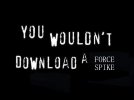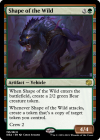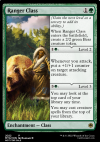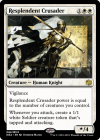For all you sickos who just can't wait: The Cube
This is my fourth (?) iteration of my primary cube, and the second one I'm happy with. The first one I enjoyed is written up in No Free Lunches, and while I liked it a lot, the fact that you could get a pack like the following is a testament to just how much I needed to figure out:















There are many problems about opening a pack like the above, and this was after I'd solicited a fair amount of feedback.
--Obviously, the power level was all over the place
--The mana curves were wild
--Cards tended towards the complex (thank you Nemo for pointing this out!)
--Signals were either smacking people in the face (Orc Sureshot/Stonecloaker) or didn't work the way I wanted them to (Thassa's Oracle)
--Cards didn't do what I thought they did (e.g. Kess is a removal machine, not a fun way to start a durdly value train in Grixis. Oops.)
--As a result, a lot of neat cards didn't have a home.
There were also a number of good things:
--The powerful enablers helped lower-power synergies to shine
--Playing the cube was a bucketload of fun, and it really did feel like being a kid in a candy store
--Mechanics and themes cohered nicely and the loose idea of "cards changing states" is one that I've grown to appreciate more and more
In summary, grabbing cards traditionally seen in divergent settings yielded cool results, and felt like shooting the moon was a viable rollercoaster of an experience, but the longevity suffered. By a few drafts in, my playgroup had figured out what was obviously broken, and trying to raise the power level of the rest of the cube wasn't working. I didn't want to remove the strong cards because they make for fun centerpieces of a deck. I didn't want to change out the weaker themes because their inherent durdliness is appealing to me. In short, I'd outgrown my cube. The solution was obvious: make a new cube!
This cube, the MDFC or Modal Dumb Fun Cube, has a lower-powered core of 336 cards with lower complexity supplemented by an occasional module of 144 cards. Drafts are 3 packs of 16 cards, with 4 occasionals seeded in the first pack, 2 in the second pack, and none in the third. I've managed to rein in my complexity budget significantly while making sure that the wordy cards see play by ensuring that my drafters run into them earlier in the draft. Using rarity as a proxy for amount of text, we see the following:
Core module:
87 commons, or 25.9% of the cube.
111 uncommons, or 33.0% of the cube.
114 rares, or 33.9% of the cube.
20 mythic rares, or 6.0% of the cube.
Occasional module:
7 commons, 4.9% of the module.
26 uncommons, 18.1% of the module.
81 rares, 56.3% of the module.
30 mythic rares, 20.8% of the module.
Given that I draw a third of my occasional cards for any given round of cube, we get the following overall percentages, on average:
89.3 commons, or 22.3% of the cube.
119.7 uncommons, or 31.2% of the cube.
151 rares, or 39.3% of the cube.
30 mythic rares, or 7.8% of the cube.
Wtwlf's cube, for comparison, breaks down like so:
42 commons, 7.8% of the cube.
92 uncommons, or 17.0% of the cube.
307 rares, or 56.9% of the cube.
79 mythic rares, or 14.6% of the cube.
I'd gladly include other cubes of power levels more similar to mine, but the point is clear: I'm frontloading the "complex" cards by a sizeable margin. This tracks with my assumption that build-around cards are more complex than the "good stuff,"
Other important lessons:
Deemphisizing of Themes
Not every card has to scream "LANDFALL" or "+1/+1 COUNTERS" to make themes emerge. Likewise, some archetypes just don't work--looking at you, cycling. As a way to get around this, I'm trying to weave themes in more subtly this time. Faithless Looting and Flameblade Adept will never leave my cube, but this doesn't mean I need to run Astral Slide as "the" signpost for the intersection of blink and cycling. Players can experience the spirit of exploration better without this degree of hand-holding, and the cube feels much more elegant as a result.
Modality
Choices are helpful, but not the end-all be-all of the cube. The goal is to maximize fun, and, in the spirit of many board games, more choices of various degrees of validity give players the ability to feel especially clever. Choice helps with this, but too much choice means that cards are always helpful, meaning that it's always correct to run them. While this is an obvious oversimplification, the newly previewed SNC charms like Maestros Charm or Obscura Charm begin to come close. I'm therefore not maximizing choice, but rather fun.
DFCs
This cube uses DFCs. I like them! My solution is to draft with the DFCs, but then to include pre-marked checklist cards in the tokens box. Hopefully this will encourage people to use tokens. TBD!
Fixing
I don't like four-color decks being the norm, but I do like being able to play spells. As a result, I'm at 60 fixing lands out of 384 (7.5 lands per player). This might be too much. We also have 6 ZNR MDFCs and average another 20 non-fixing lands, which, while they don't fix your colors, prevent mana screw. This is the
I'm also toying with two changes to removal: first, giving the Ravnica bouncelands basic land types to make them fetchable might breathe new life into a fun set of synergy-empowering lands that have not aged super well, and second, I might bump my cube up to 408 (3 packs x 17 cards each) to give me room for another ten or twenty fixing lands. This is almost definitely too much, but I do need to think about untapped fixing, as only the fetches and Horizon lands offer that sort of power. I'm contemplating a set of shocks, but suggestions would be welcome. TBD as well!
Cube Size and Occasionals
Due to the sheer volume of lands, about a quarter of the cube in all, we need to be sure to make playables. Going up to a 3x16 format gives players an average of 36 spells, which is a fine place to be. I'm also utilizing a different ratio of occasionals than most people, with my occasionals appear in one of three drafts as opposed to the typical ratio of around 1:8 or 1:10. Perhaps they should be termed "infrequents," but I do want these cards to be something that people can plan for rather than be jumpscared by a wild Sneak Attack.
Also, I want to make it clear that I'm not tied either to the number of occasionals or a strict color balance. Rather, it's an ideal to migrate towards and a good place to start from; in a perfect world I'd average 144 occasionals and a perfect split between colors, but it's not required. I've already abandoned this idea with 3+ color cards, which are all going to show up in the occasionals, as I want them to show up in packs 1 and 2 rather than languish in pack 3. If anyone has any thoughts on that, I'd love to hear them!
Removal to Targets Ratio
For me, a 2.5:1 ratio of targets to removal (~170/70) seems to be the ideal. Too much to either end makes games play out relatively linearly, and the cube doesn't quite feel like a cube. This balance is especially delicate due to the prevalence of fixing lands gobbling up a lot of real estate, which is why I shifted to the ratio between removal and targets rather than a strict ratio of cube size or even of spells (thanks, Sigh!).
Anyways, I'm looking forward to launching this cube in person soon(TM)! See you all on the flip side, pun not intended.
This is my fourth (?) iteration of my primary cube, and the second one I'm happy with. The first one I enjoyed is written up in No Free Lunches, and while I liked it a lot, the fact that you could get a pack like the following is a testament to just how much I needed to figure out:
There are many problems about opening a pack like the above, and this was after I'd solicited a fair amount of feedback.
--Obviously, the power level was all over the place
--The mana curves were wild
--Cards tended towards the complex (thank you Nemo for pointing this out!)
--Signals were either smacking people in the face (Orc Sureshot/Stonecloaker) or didn't work the way I wanted them to (Thassa's Oracle)
--Cards didn't do what I thought they did (e.g. Kess is a removal machine, not a fun way to start a durdly value train in Grixis. Oops.)
--As a result, a lot of neat cards didn't have a home.
There were also a number of good things:
--The powerful enablers helped lower-power synergies to shine
--Playing the cube was a bucketload of fun, and it really did feel like being a kid in a candy store
--Mechanics and themes cohered nicely and the loose idea of "cards changing states" is one that I've grown to appreciate more and more
In summary, grabbing cards traditionally seen in divergent settings yielded cool results, and felt like shooting the moon was a viable rollercoaster of an experience, but the longevity suffered. By a few drafts in, my playgroup had figured out what was obviously broken, and trying to raise the power level of the rest of the cube wasn't working. I didn't want to remove the strong cards because they make for fun centerpieces of a deck. I didn't want to change out the weaker themes because their inherent durdliness is appealing to me. In short, I'd outgrown my cube. The solution was obvious: make a new cube!
This cube, the MDFC or Modal Dumb Fun Cube, has a lower-powered core of 336 cards with lower complexity supplemented by an occasional module of 144 cards. Drafts are 3 packs of 16 cards, with 4 occasionals seeded in the first pack, 2 in the second pack, and none in the third. I've managed to rein in my complexity budget significantly while making sure that the wordy cards see play by ensuring that my drafters run into them earlier in the draft. Using rarity as a proxy for amount of text, we see the following:
Core module:
87 commons, or 25.9% of the cube.
111 uncommons, or 33.0% of the cube.
114 rares, or 33.9% of the cube.
20 mythic rares, or 6.0% of the cube.
Occasional module:
7 commons, 4.9% of the module.
26 uncommons, 18.1% of the module.
81 rares, 56.3% of the module.
30 mythic rares, 20.8% of the module.
Given that I draw a third of my occasional cards for any given round of cube, we get the following overall percentages, on average:
89.3 commons, or 22.3% of the cube.
119.7 uncommons, or 31.2% of the cube.
151 rares, or 39.3% of the cube.
30 mythic rares, or 7.8% of the cube.
Wtwlf's cube, for comparison, breaks down like so:
42 commons, 7.8% of the cube.
92 uncommons, or 17.0% of the cube.
307 rares, or 56.9% of the cube.
79 mythic rares, or 14.6% of the cube.
I'd gladly include other cubes of power levels more similar to mine, but the point is clear: I'm frontloading the "complex" cards by a sizeable margin. This tracks with my assumption that build-around cards are more complex than the "good stuff,"
Other important lessons:
Deemphisizing of Themes
Not every card has to scream "LANDFALL" or "+1/+1 COUNTERS" to make themes emerge. Likewise, some archetypes just don't work--looking at you, cycling. As a way to get around this, I'm trying to weave themes in more subtly this time. Faithless Looting and Flameblade Adept will never leave my cube, but this doesn't mean I need to run Astral Slide as "the" signpost for the intersection of blink and cycling. Players can experience the spirit of exploration better without this degree of hand-holding, and the cube feels much more elegant as a result.
Modality
Choices are helpful, but not the end-all be-all of the cube. The goal is to maximize fun, and, in the spirit of many board games, more choices of various degrees of validity give players the ability to feel especially clever. Choice helps with this, but too much choice means that cards are always helpful, meaning that it's always correct to run them. While this is an obvious oversimplification, the newly previewed SNC charms like Maestros Charm or Obscura Charm begin to come close. I'm therefore not maximizing choice, but rather fun.
DFCs
This cube uses DFCs. I like them! My solution is to draft with the DFCs, but then to include pre-marked checklist cards in the tokens box. Hopefully this will encourage people to use tokens. TBD!
Fixing
I don't like four-color decks being the norm, but I do like being able to play spells. As a result, I'm at 60 fixing lands out of 384 (7.5 lands per player). This might be too much. We also have 6 ZNR MDFCs and average another 20 non-fixing lands, which, while they don't fix your colors, prevent mana screw. This is the
I'm also toying with two changes to removal: first, giving the Ravnica bouncelands basic land types to make them fetchable might breathe new life into a fun set of synergy-empowering lands that have not aged super well, and second, I might bump my cube up to 408 (3 packs x 17 cards each) to give me room for another ten or twenty fixing lands. This is almost definitely too much, but I do need to think about untapped fixing, as only the fetches and Horizon lands offer that sort of power. I'm contemplating a set of shocks, but suggestions would be welcome. TBD as well!
Cube Size and Occasionals
Due to the sheer volume of lands, about a quarter of the cube in all, we need to be sure to make playables. Going up to a 3x16 format gives players an average of 36 spells, which is a fine place to be. I'm also utilizing a different ratio of occasionals than most people, with my occasionals appear in one of three drafts as opposed to the typical ratio of around 1:8 or 1:10. Perhaps they should be termed "infrequents," but I do want these cards to be something that people can plan for rather than be jumpscared by a wild Sneak Attack.
Also, I want to make it clear that I'm not tied either to the number of occasionals or a strict color balance. Rather, it's an ideal to migrate towards and a good place to start from; in a perfect world I'd average 144 occasionals and a perfect split between colors, but it's not required. I've already abandoned this idea with 3+ color cards, which are all going to show up in the occasionals, as I want them to show up in packs 1 and 2 rather than languish in pack 3. If anyone has any thoughts on that, I'd love to hear them!
Removal to Targets Ratio
For me, a 2.5:1 ratio of targets to removal (~170/70) seems to be the ideal. Too much to either end makes games play out relatively linearly, and the cube doesn't quite feel like a cube. This balance is especially delicate due to the prevalence of fixing lands gobbling up a lot of real estate, which is why I shifted to the ratio between removal and targets rather than a strict ratio of cube size or even of spells (thanks, Sigh!).
Anyways, I'm looking forward to launching this cube in person soon(TM)! See you all on the flip side, pun not intended.



















